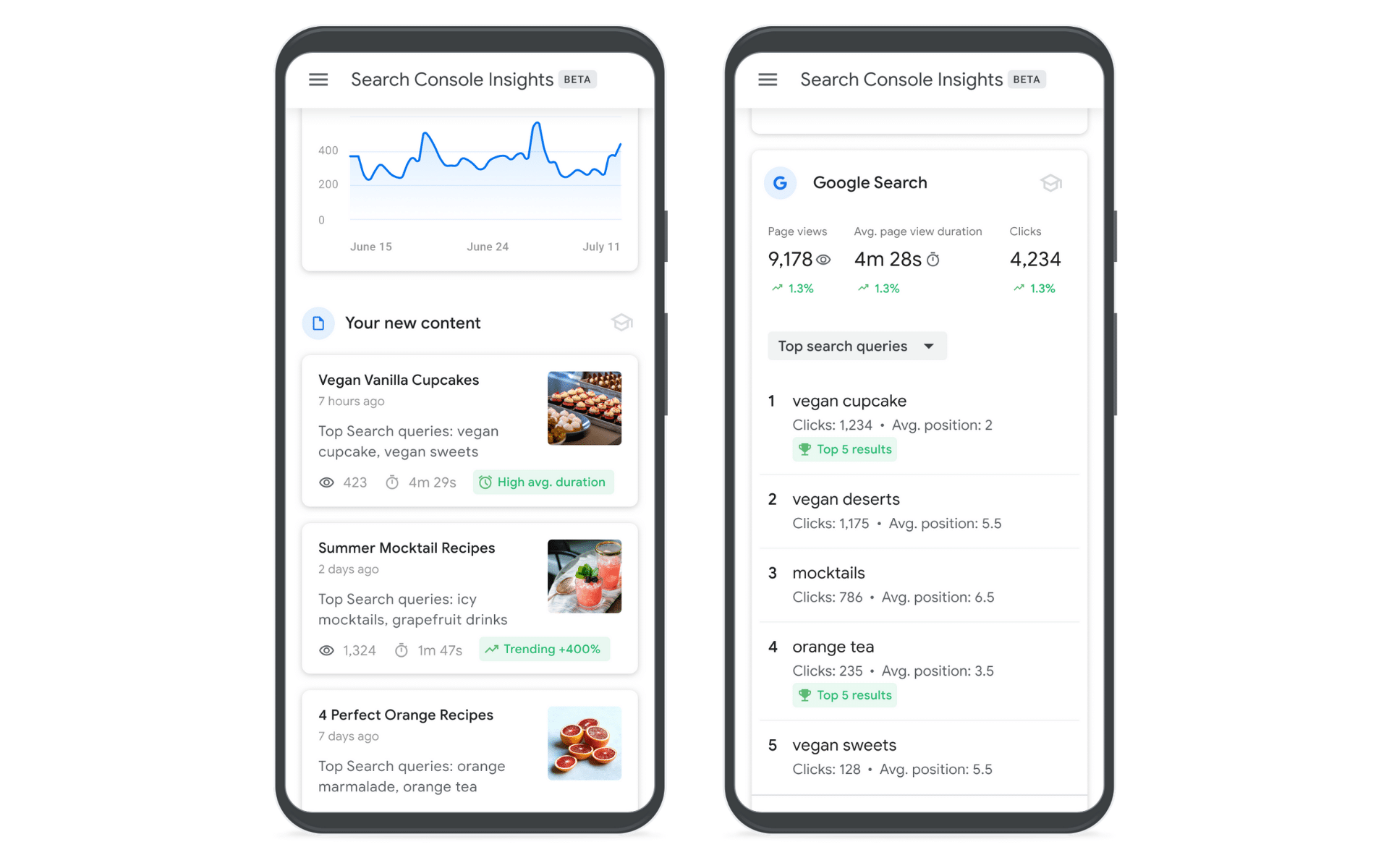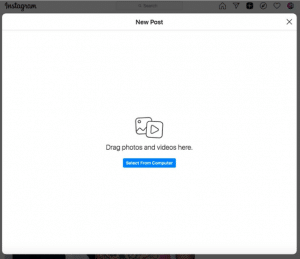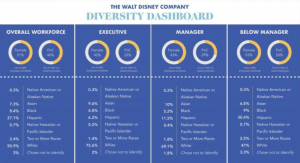What a month! If you want updates from the digital industry, this month we’ve got loads of them. From new eCommerce tools, improvements to social media platforms to Google updates, we’ve covered everything in this digital round-up:
Contents
Facebook’s new eCommerce features
Facebook’s just announced that they will be launching 4 new features for online retailers to be able to be found by more people and increase their sales.
- One Facebook Shop three additional sales channels: Once you set up your Facebook Shop, your products can now appear on the Instagram Shop tab, Facebook Marketplace (Currently only in the US), and even Whatsapp.
- Reviews and ratings on Instagram: Instagram Shops will now have star ratings and customer reviews, as well as pictures from the customers, to give Instagram shops a bit more credibility.
- Shop ads: The new Facebook Shop ads will let advertisers personalise the ads according to the target users’ previous shopping activity, making the ads more likely to convert.
- Try-On feature: Facebook’s going to be using augmented reality to let potential customers try on products. This is going to be rolled out to beauty brands first and some other industries in the near future. They are also testing AR-based ads to encourage targeted people to try on the products they might be interested in.
We’ve all seen eCommerce grow rapidly over the last couple of years and it’s always so exciting to see industry leaders like Facebook rolling out brand new features to make the experience much better for customers as well as online retailers.
Google will suspend eCommerce websites that display inaccurate information about the availability of advertised products
We all agree that for any website, the most important thing is to offer a good user experience. These users are the ones who will ultimately enable the development and growth of the business. Google is aware of this importance, so it has been working on improving its platform and developing new tools to ensure that websites provide a better experience for their users.
This latest update is all part of the larger project called Page Experience Update.
Google focuses on user experience, also in online shopping
This new Google policy is called “Inaccurate Availability” and refers to cases where products change their availability during the shopping process, from the time the Google user sees the product ad until they complete the transaction. This new policy will be implemented from 1 September 2021, and will replace the old delivery issues policy. According to Google’s Google Merchant Center support blog, such inaccuracies in product availability lead to a drop in purchase rates and business credibility.
“When a product’s availability changes from “in stock” on the landing page to “out of stock” or “unavailable” after it is added to the cart, the customer has a negative experience, making them less likely to make purchases from your shop in the future.”
So, as a result of this new policy, websites that fall into this violation may receive a warning through their Google Merchant Center account. Or they could even be automatically suspended if they are repeat offenders.
What reasons can lead to non-compliance with this policy
It is normal, especially when it comes to seasonal sales, that products sell out quickly and can change their availability over short periods of time. However, this is not always the case, the following are some of the most common cases exposed by Google that can end up generating this discrepancy in product information:
- Use of IP or geographic location detection. As Google explains, “Don’t change the availability of your product based on a user’s location. If you only target your ads to certain locations within a country, use regional pricing and availability”.
- The buy button does not work. The product appears to be available on the landing page, but shows as out of stock or unavailable after pressing the buy button.
- The product cannot be shipped to a particular address. During checkout, after providing the shipping address, the product is no longer available for home delivery. If you have a product that is available for in-store pick-up only or is shipped to a pick-up point, please check the shipping cost guidelines to confirm that these options are supported in the country of sale. Otherwise, make sure that the product is excluded from online offers using the excluded_destination attribute. You could also use ads from local inventory.
- It is not possible to confirm the purchase of products in the entire country of sale. If you sell products that are available only in some regions of the country of sale.
What to do if you receive a warning
Once you receive a warning due to an inaccuracy in the availability of products, you need to take action on it. Otherwise, the account could be subject to suspension by the Merchant Center team. Google has published on its support blog a series of instructions to follow in these cases.
In the first instance, it is necessary to verify that the purchase of the products available on the website can be confirmed. And also the availability of home delivery, or other means of delivery.
Finally, it will be necessary to request verification of the information, to validate that the products that caused the discrepancies no longer show any inaccuracies.
Google Page Experience Update Begins Gradual Rollout
The 15th of June saw the beginning of the much-anticipated Page Experience update. Much anticipated as the scheduled date has been pushed back for reasons only known to Google.
The slow rollout is intentional and expected to be completed by the end of August, however dramatic fluctuations in ranking positions are not predicted with this rollout.
An announcement from Google reads
“We’ll begin using page experience as part of our ranking systems beginning in mid-June 2021. However, page experience won’t play its full role as part of those systems until the end of August. You can think of it as if you’re adding a flavoring to a food you’re preparing. Rather than add the flavor all at once into the mix, we’ll be slowly adding it all over this time period.”
Here’s a quick recap of the signals involved to achieve a positive page experience, but for more information why not see our blog on Google’s Page Experience update.
- Core Web Vitals: LCP (Largest Contentful Paint), FID (First Input Delay) & CLS (Cumulative Layout Shift).
- Mobile usability: No mobile usability errors for the page.
- Security issues: All pages on the site will be disqualified from achieving a Good page experience status if any security issues are detected.
- HTTPS: For Good page experience status a page must be served over HTTPS.
- Ad Experience: Intrusive advertising techniques that are deemed as distracting, interrupting or otherwise diminishing to a positive user experience are not permitted.
Google Search Console Insights Now Available to All
Google Search Console Insights is designed with content creators and publishers in mind to “Provide content creators with the data that they need to make informed decisions and improve their content” and “can help them understand how audiences discover their site’s content and what resonates with their audiences”.
To get the most out of this new report ensure you link your Google Analytics account with Search Console. This way you have even more data to gain powerful insights for content creation.
In the Insights report, you’ll see a timeline visualisation of the last 28 days which includes pages views and average duration coupled with a comparison with the previous 28 days to indicate if the metric has increased or decreased. Further down the report a dashboard displays new and popular content along with top traffic channels and referring links.
Search Console Insights can be accessed through Search Console at the top of the page, otherwise, you can search for the site in Google and save it as a bookmark.
An important point to be aware of is that currently Search Console Insights only supports Universal Analytics properties (one’s with IDs beginning with “UA-”), although support for Google Analytics 4 is in the pipeline.
Spotify launches Greenroom, its alternative in the audio chat segment
In a short time, streaming platforms have taken over digital content consumption habits, and among them, Spotify stands out as the benchmark in the music sector. But this Swedish company has sought to expand beyond its immense library of songs to other audio content, such as its incursion into the world of podcasts.
Following this expansion, Spotify has also decided to join the audio chat trend that Clubhouse introduced last year. Spotify has been in the running since late March when it acquired Betty Labs, the company behind Locker Room, a live audio content app focused on sports. Now, two months later, Spotify has finished integrating this type of content into its product catalogue with a major overhaul of Locker Room.
Greenroom, Spotify’s new face for Locker Room
Locker Room was a platform where users could find discussions and conversations about their favourite sports topics. Since the purchase of this app, Spotify has been working on incorporating new topics and assimilating them into the brand’s image. Now their efforts have come to fruition with the birth of Greenroom, the new name given to the app for this new phase.
The app will continue to host sports conversations but will expand its scope to include music, art, and culture. Greenroom is available to use now in around 135 countries, for both Android and iOS users. Similarly, this launch brings with it not only a name change and new themes, but a number of new features to position itself in this growing market.
Among its new features, the app has a redesigned look and feel, which goes hand in hand with the integration of user login with Spotify credentials. Similarly, its interface has been redesigned to offer content of interest to users in a more accessible way. Among other things, any user can moderate or participate in live rooms through an improved control interface for chats.
In addition, Greenroom will allow users to record live chats, as a means to expand its content offering. This would be one of the main new features of this new app, as others, such as Clubhouse, do not allow recording of their conversations. Thus, any Spotify user will have access to this app, being able to create and participate in different groups or rooms, on a platform similar to the one they are already used to.
Spotify is committed to its content creators
The idea behind Greenroom is to broaden Spotify’s target audience, as well as offering its users the possibility of discovering new content. To do this, one of the main tools is to have content creators who are willing to contribute quality content to the platform. Spotify is aware of this, and to motivate content creators to join its platform, it will soon launch its Spotify Creator Fund.
This initiative aims to help creators monetise their content, creating a platform where they feel comfortable and can earn money. With this, the streaming platform seeks to create a stronger community, where creators can grow, create a career and be rewarded for their efforts, which will end up driving the development of more and better content for Greenroom users to enjoy. Although the launch of this project is expected to take place later this summer, it is already possible for creators to sign up and learn a little more about Spotify’s offering.
Instagram Launches Live Test of Uploads From the Desktop Version of the App
Yep, just the news every social media manager has been waiting for! Soon you will be able to upload images and videos on Instagram from your desktop. It’s indeed a significant relief for marketers working on many clients, as it is a lot easier to manage media from a desktop.
Instagram has recently launched a first live test feature to create feed posts from the App’s desktop version. Although, it’s been implemented with a small group of users for now when fully launched will be released with a full suite of upload and posting options, along with filters too!
Google Delays Third Party Cookie Phase-out to 2023
The Privacy Sandbox initiative, which was meant to phase out third-party cookies in Chrome, has been delayed from early 2022 to late 2023.
The initiative was essentially aimed to help devise certain web technologies that give developers the tools required for viable advertising business models.
In the place of cookies, Google is set to implement its own Privacy Sandbox system that will still allow the website to show targeted ads but would reduce the number of information users share.
In short, under the ‘Privacy Sandbox’ project, third-party cookies will be disabled on the Chrome browser and will be replaced with a new set of tools for targeting advertising and other functionality that will potentially protect consumers’ privacy to a greater extent.
It’s also noteworthy that Google’s biggest competitors, like Firefox and Safari have already blocked third-party cookies. Since Chrome is one of the most prominent web browsers in terms of market segment, the ‘news’ is indeed a big deal for advertisers.
Topical Spotlight: Brands who aced the Pride Month
June AKA the most colorful month of the year witnessed some great campaigns from various brands across the world. Here’s a quick analysis of the top two campaigns we think aced Pride Month with pride, literally!
-
Absolut Vodka- Rainbow Vodka
Playing on content, the brand celebrated the month of diversity by sharing its history of being an ally to the LGBTQ communities. The strategy helped portray their long-standing commitment and saved them from just being in the spotlight for mere numbers and publicity.
What did they do well?
The brand showcased its history of being associated with PRIDE through its brand offering—Rainbow Vodka that celebrated the spirit of inclusion. Absolut’s campaign shows that to trend, you don’t need to be all flashy. A subtle approach can do the job for you. It’s the sentiment that counts!
-
Disney’s Inclusive Dashboard
We absolutely loved how Disney used the month’s theme to showcase their support creatively!
Their dashboard does exhibit their commitment to a more inclusive and equal workplace for everyone to thrive. Additionally, they also released an entirely new range of merchandise to support the LGBTQ community. The Rainbow Disney Collection encapsulated all of the top, from Star Wars, Marvel, and Pixar.
What did they do well?
We think leveraging the topical theme of the month to showcase their brand values came out well from this campaign for Disney. Apart from getting online visibility, the campaign also helped position Disney as a thought leader in encouraging diversity and inclusion at workplaces.










